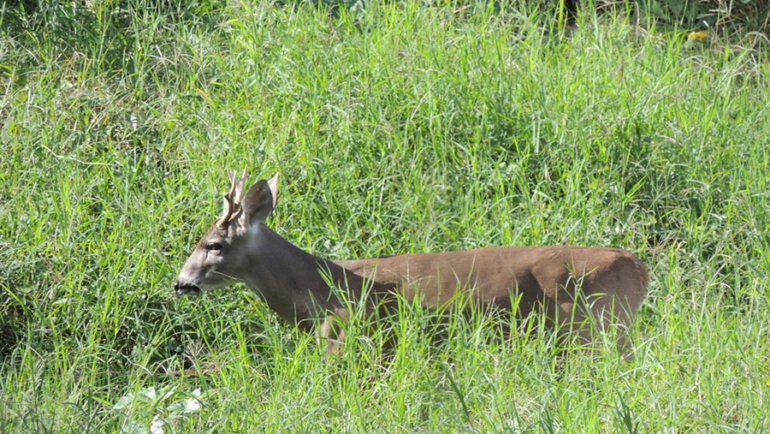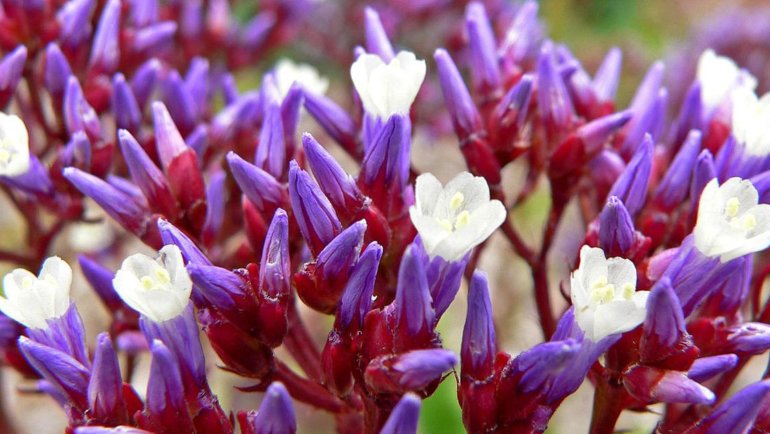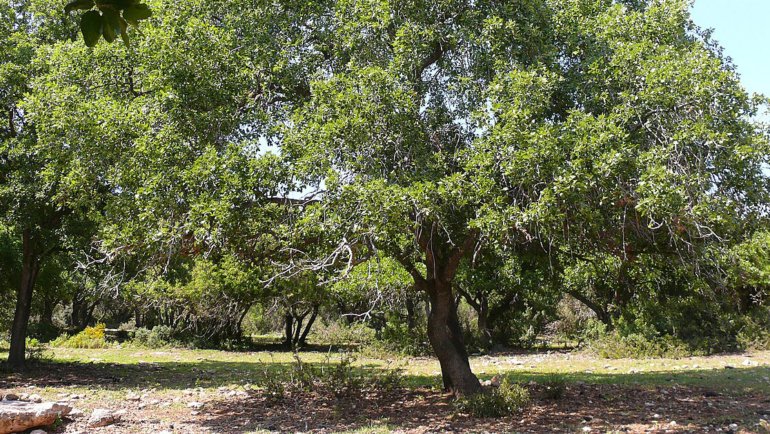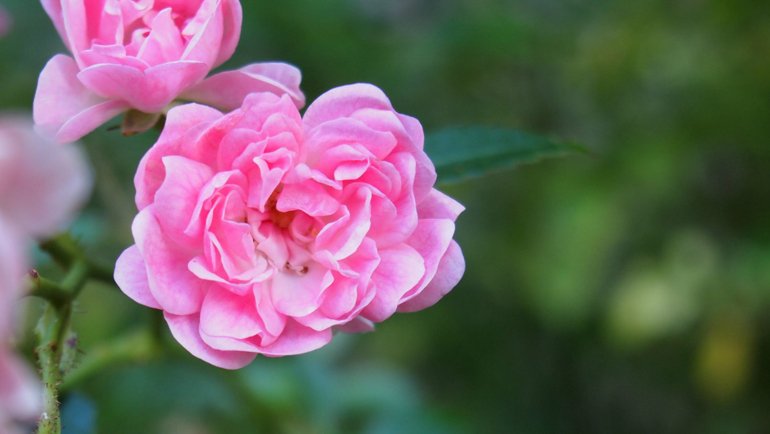Guatemala, a land of vibrant cultures, ancient Mayan ruins, and lush rainforests, is also home to one of the world’s most spectacular avian wonders – the resplendent quetzal.
As the national bird of Guatemala, the quetzal is not only an emblem of freedom and independence but is also deeply rooted in the ancient Mayan culture. What if we told you that the quetzal’s tail feathers were once more valuable than gold?
Dive in to uncover more fascinating tales and facts about this mesmerizing creature.
Quick Info About The Resplendent Quetzal
| Scientific Name: | Pharomachrus mocinno |
| Average Size: | 36-40 cm (14-16 in) without tail streamers; tail streamers can be over 65 cm (25 in) long |
| Average Weight: | 180-210 grams (6.3-7.4 oz) |
| Average Lifespan: | 20-25 years in the wild |
| Geographical Range: | From Southern Mexico to western Panama |
| Habitat: | Montane cloud forests at elevations of 1,200-3,000 meters (4,000-9,800 ft) |
| Conservation Status: | Near Threatened (IUCN Red List) |
Meet the Resplendent Quetzal, National Animal of Guatemala
The resplendent quetzal is, without a doubt, a bird that lives up to its name. Characterized by its iridescent green plumage, bright red chest, and distinctively long tail feathers, this bird is a sight to behold in its natural habitat.
The male quetzal, in its full glory, is especially striking with its twin tail streamers that can be as long as its body. These tail feathers, symbolic of freedom in ancient Mayan culture, float gracefully behind them as it flies through the air.
Sexual dimorphism is pronounced in quetzals. While both sexes are visually striking, the females are more modestly adorned, lacking the long tail streamers and having a more subdued gray chest instead of the bright red seen in males.
The quetzal plays a crucial role in its ecosystem. Primarily frugivorous, it has a particular penchant for wild avocados, making it essential for the dispersal of these tree seeds.
However, its diet also includes insects, frogs, and small lizards. With its vibrant colors and larger size, the quetzal doesn’t have many natural predators. But the birds do have to watch out for birds of prey such as eagles and hawks.
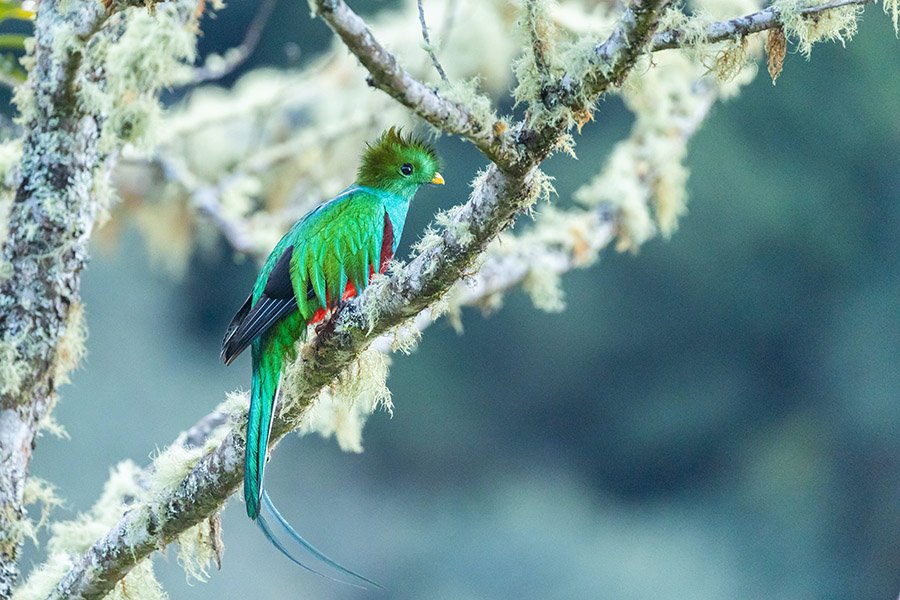
Where Does The Resplendent Quetzal Live?
Native to the high-altitude cloud forests of Central America, the resplendent quetzal prefers dense, mist-covered woodlands. These damp environments provide an abundance of fruiting trees and other food sources the quetzal relies on. In Guatemala, one of the prime habitats for these birds is the cloud forests of the Sierra de las Minas and the Montañas del Bocac.
The quetzal’s range extends from southern Mexico down through Guatemala to western Panama. Each region provides slightly varied habitats, but the quetzal always seeks out those cool, humid cloud forests typically found at elevations between 1,200 and 3,000 meters.
Why and When Did The Resplendent Quetzal Become The National Animal of Guatemala?
The resplendent quetzal isn’t just a symbol for Guatemala—it’s a living relic of the ancient civilizations that once thrived in this land. Its symbolic ties run deep with the Mayans, who regarded the quetzal as the god of the air and a symbol of freedom and wealth.
The bird’s iridescent green tail feathers were treasured and used in ceremonial garb for Mayan rulers, believed to represent the green of spring and the promise of life. Its name “quetzal” even originates from the Nahuatl (Aztec) word “quetzalli,” which translates to “precious” or “beautiful.”
The choice of the resplendent quetzal as the national symbol for Guatemala signifies the country’s rich cultural history, as well as its commitment to freedom. The bird’s tail feathers, never growing in captivity, became a powerful metaphor for the spirit of liberty that cannot be caged.
It’s not clear when exactly the quetzal was declared the national bird, but its significance has been recognized for centuries. Its association with freedom is also the reason why Guatemala named its currency after the bird.
While the bird is a revered symbol, there have been controversies, especially concerning its conservation. With habitat loss and deforestation becoming significant concerns in Central America, there have been debates about how best to protect this iconic species while also meeting the developmental goals of the country.
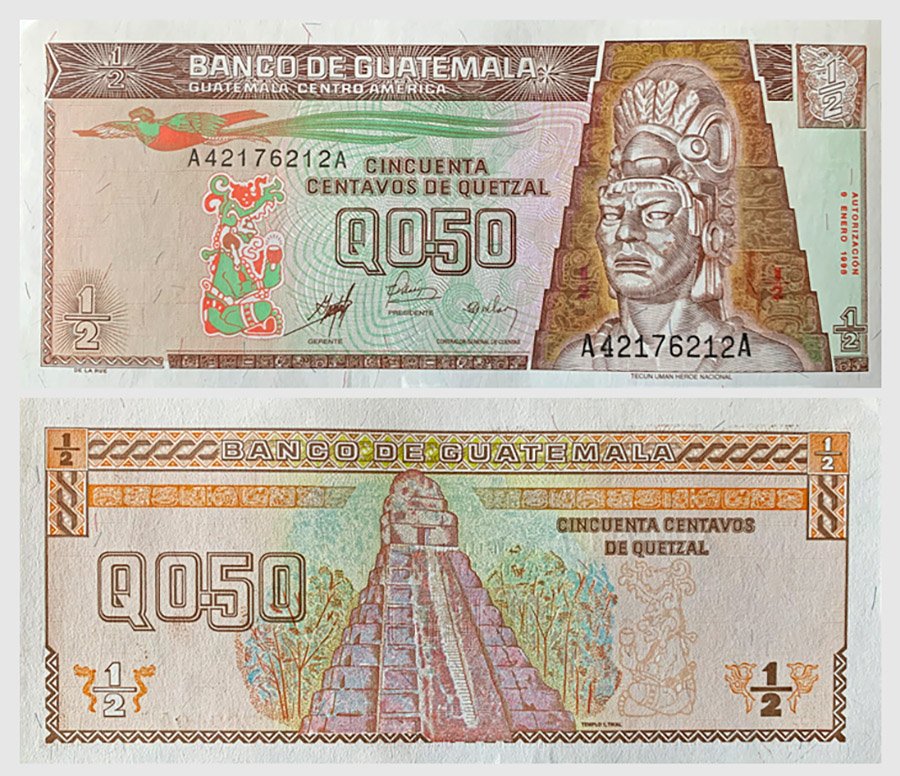 Source: Wikimedia Commons
Source: Wikimedia CommonsWhere is The Resplendent Quetzal Featured in Guatemala?
The reverence Guatemala holds for the resplendent quetzal is evident in its national emblem. The bird is prominently featured on the Guatemalan coat of arms, perched on a scroll that bears the inscription “Libertad 15 de Septiembre de 1821,” signifying the nation’s date of independence.
Additionally, as a testament to its cultural and economic significance, Guatemala named its currency “quetzal.” The bird can also be found on various denominations of Guatemalan banknotes, beautifully illustrated in its natural habitat or in flight, symbolizing the nation’s spirit and identity.
Names of The Resplendent Quetzal
The resplendent quetzal is most commonly known by its iconic name “quetzal.” This name is rooted in the Nahuatl word “quetzalli,” which means both “large brilliant tail feather” and “precious” or “beautiful.”
Throughout its range, the bird is typically referred to as “quetzal,” though local variations and indigenous names do exist. In some of the Mayan languages spoken in the bird’s range, it’s sometimes referred to with names that emphasize its brilliant plumage or its sacred status.
In terms of scientific synonyms, the bird has been previously classified under different names, but the currently accepted scientific name is Pharomachrus mocinno.
Is The Resplendent Quetzal Endangered?
The resplendent quetzal is currently listed as “Near Threatened” on the IUCN Red List of Threatened Species. While it is not yet classified as endangered, its populations are declining, and it faces a range of threats.
The primary challenges to its survival include habitat loss due to deforestation, especially in the cloud forests of Central America where it resides. Illegal hunting, often for its stunning feathers, also poses a threat.
There are ongoing conservation efforts to protect the quetzal. Many of these involve community-based initiatives that aim to conserve its habitat while also promoting eco-tourism. Bird-watching tours that focus on the quetzal can provide local communities with a sustainable income, incentivizing them to protect the bird and its environment.
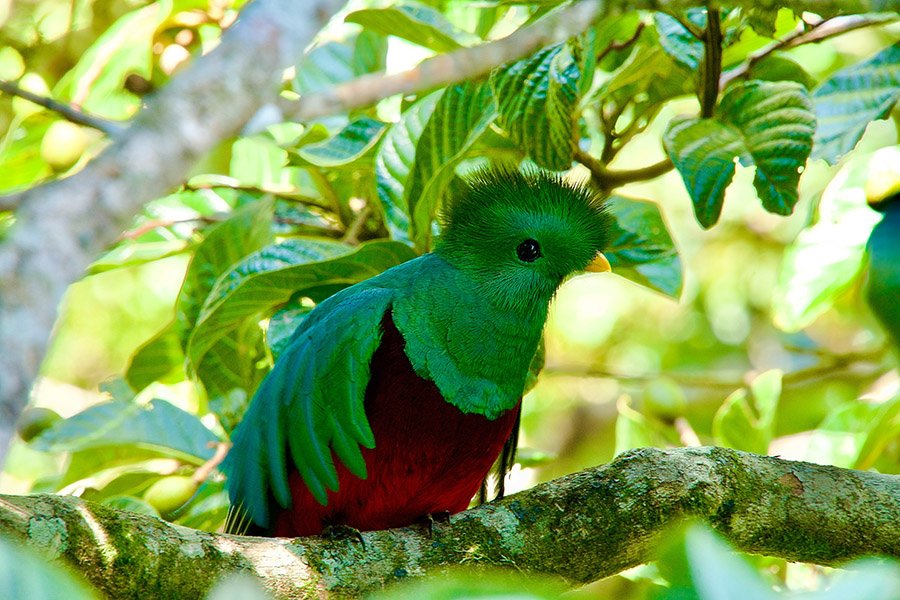
Interesting Facts About The Resplendent Quetzal
- Sacred Symbolism: The ancient Mayans and Aztecs viewed the quetzal as a symbol of freedom because it is believed that this bird cannot survive in captivity and will often take its own life if caged.
- Molted Treasure: The long tail feathers, which can reach up to 26 inches (65 cm) in length, are naturally molted by the birds and were collected without harming them in ancient times.
- Unique Nesting Habits: Quetzals carve out their nests in rotten trees using their beaks, often choosing trees affected by wood-boring insects which make the task easier.
- Fruit Lovers: While they also eat insects, frogs, and small lizards, quetzals have a particular fondness for fruit, especially wild avocados.
- Mutual Benefit: The quetzal plays a vital role in seed dispersal, especially for the wild avocado. As the bird digests the fruit, it excretes the seed, promoting growth in different parts of the forest.
Other Beautiful Animals Native To Guatemala
- Guatemalan Black Howler Monkey (Alouatta pigra): This large black monkey is known for its thunderous calls that resonate through the forest, especially at dawn and dusk. They are primarily herbivores and play a vital role in seed dispersal.
- Horned Guan (Oreophasis derbianus): This turkey-sized bird, native to the mountains of Guatemala, is an endangered species due to habitat loss. With a distinctive red horn on its head, the horned guan is a unique sight in the Guatemalan cloud forests.
- Guatemalan Beaded Lizard (Heloderma horridum charlesbogerti): This venomous lizard, with its bead-like scales and striking appearance, is one of only two venomous lizards in the world. It’s closely related to the more famous Gila monster.
- Ocellated Turkey (Meleagris ocellata): This bird, with its iridescent feathers, is native to the Yucatán Peninsula, which includes parts of Guatemala. Unlike its North American counterpart, it has a blue head with orange and red nodules.
- Puma (Puma concolor): Also known as the mountain lion or cougar, the puma can be found in a variety of habitats across Guatemala, from mountains to rainforests.
Frequently Asked Questions
Why is the resplendent quetzal so important to Guatemalan culture?
The quetzal is deeply embedded in Mayan and Aztec history, symbolizing freedom and wealth. Its iridescent green tail feathers were prized and used in royal and religious attire. Additionally, the bird’s name is the basis for Guatemala’s currency, further emphasizing its importance.
Can I see a resplendent quetzal in captivity?
It’s rare to see a resplendent quetzal in captivity as they don’t fare well outside their natural habitat. They are best viewed in the wild, especially in protected reserves.
Is it true the quetzal cannot be kept in captivity?
Yes, there’s a widespread belief that quetzals cannot survive in captivity. They often become highly stressed and can even harm themselves when caged.
What’s the best time to see the resplendent quetzal in the wild in Guatemala?
The best time to spot quetzals in the wild is during their breeding season, which runs from March to June. Early mornings in cloud forests are the prime time to hear their calls and see them.
Besides the quetzal, which other symbols are representative of Guatemala?
Other national symbols of Guatemala include the white nun orchid (national flower) and the ceiba tree (national tree). The blue and white stripes on the Guatemalan flag also hold significant symbolic value, representing the country’s two oceans and the purity and peace between them.
